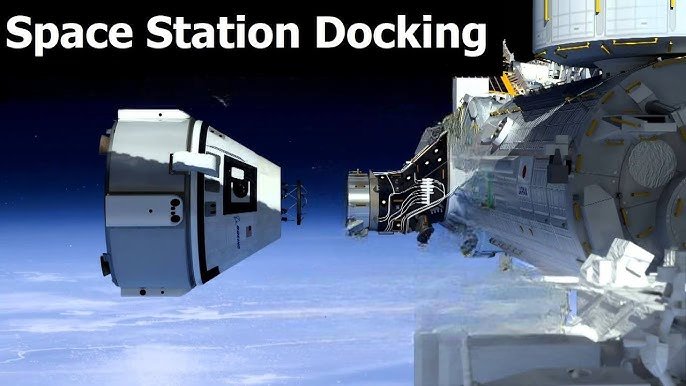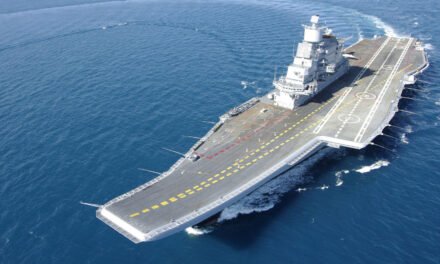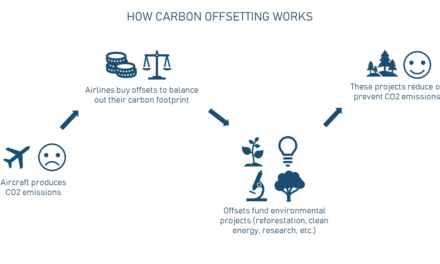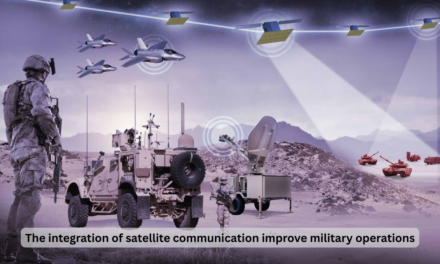Docking systems are crucial for enabling spacecraft to physically connect with each other or with space stations in orbit. These systems allow for the transfer of crew, cargo, and supplies, as well as for refueling, repairs, and maintenance. Docking is a highly precise operation requiring advanced technology and coordination between spacecraft systems.
Key Components of Docking Systems
- Docking Ports and Adapters
- Docking Port: The physical interface on both spacecraft, designed to create a secure connection.
- Docking Adapter: Allows spacecraft with different docking mechanisms to connect. For example, NASA’s International Docking System Standard (IDSS) ensures compatibility between international spacecraft.
- Guidance, Navigation, and Control (GNC)
- Sensors, cameras, and radar systems guide spacecraft during approach and alignment.
- Algorithms and autopilot systems ensure precision.
- Capture Mechanisms
- Systems like hooks, latches, or soft capture rings ensure initial contact and alignment before hard docking is secured.
- Sealing Systems
- Gaskets and seals ensure an airtight connection, allowing for safe transfer between spacecraft.
- Power and Data Interfaces
- Docking systems include connections for transferring power, data, and fluids (e.g., fuel or water).
- Safety Systems
- Redundancies, collision avoidance mechanisms, and emergency abort systems ensure safety during docking.
Phases of Docking
- Rendezvous
- The active spacecraft adjusts its orbit and approaches the target spacecraft or station.
- Autonomous or manual maneuvers align the spacecraft within a “proximity zone.”
- Approach and Alignment
- Sensors (e.g., cameras, LiDAR, radar) help align the docking ports.
- Fine adjustments are made to ensure proper orientation and distance.
- Soft Capture
- Initial contact is made using soft capture mechanisms, which cushion the impact and ensure alignment.
- Examples: SpaceX Dragon uses a soft capture system before engaging latches.
- Hard Docking
- The connection is secured using latches or clamps.
- The docking system ensures structural integrity, allowing the transfer of crew, cargo, and other resources.
- Pressurization
- The connection is sealed and pressurized to create a safe environment for crew transfer.
- Integration
- Systems for power, data, and fluid transfer are connected and activated.
Types of Docking Systems
- Androgynous Docking Systems
- Either side can initiate the docking process, providing flexibility.
- Example: NASA’s International Docking System Standard (IDSS).
- Non-Androgynous Docking Systems
- A male-female design where one spacecraft always acts as the active vehicle, and the other as the passive target.
- Example: Soyuz spacecraft docking with the ISS.
- Berthing Systems
- Robotic arms, like the Canadarm2 on the ISS, grapple and position the spacecraft for docking.
- Used for uncrewed spacecraft, such as SpaceX’s Cargo Dragon.
Technologies Supporting Docking
- Autonomous Docking Systems
- AI and automation allow spacecraft to dock without human intervention.
- Example: SpaceX’s Crew Dragon uses a fully automated docking system.
- Manual Docking
- Pilots onboard the spacecraft manually control the docking process using joysticks and cameras.
- Example: Soyuz spacecraft can be manually docked if automation fails.
- Sensors and Guidance
- Cameras and LiDAR: Provide real-time visual and distance data.
- Infrared Sensors: Detect heat signatures to aid in navigation.
- Global Navigation Satellite Systems (GNSS): Provide precise positioning data.
Challenges in Docking
- Relative Velocity
- Spacecraft approach at relative velocities of a few centimeters per second, requiring precise control to avoid collision.
- Orbital Dynamics
- Docking occurs in microgravity, where small forces can cause significant movements.
- Compatibility
- Ensuring docking systems from different agencies and manufacturers are interoperable.
- Safety
- A failed docking can damage spacecraft or pose risks to crew and mission objectives.
Examples of Docking Systems
- ISS Docking Systems
- The ISS uses multiple docking ports, including:
- International Docking System Standard (IDSS) for international spacecraft.
- Russian Probe and Drogue system for Soyuz and Progress spacecraft.
- The ISS uses multiple docking ports, including:
- SpaceX Dragon
- Fully automated docking with the ISS, using IDSS-compatible ports.
- Apollo Program
- Used the probe and drogue system for docking the lunar module with the command module.
- Future Lunar Missions
- NASA’s Gateway station will use IDSS-compatible ports for docking Orion spacecraft and other vehicles.
Future Trends in Docking Technology
- Standardization
- Broader adoption of IDSS to ensure global interoperability.
- Autonomy and AI
- Improved autonomous systems for faster, safer, and more efficient docking.
- Advanced Sensors
- Enhanced LiDAR, infrared, and machine vision systems for precise alignment and real-time adjustments.
- In-Orbit Assembly
- Docking systems will play a critical role in assembling modular spacecraft and habitats in orbit or on planetary surfaces.
- Reusable Docking Modules
- Durable systems designed for repeated use to support long-term missions and modular spacecraft.
Conclusion
Docking systems are an essential part of modern space exploration, enabling safe, reliable, and efficient interactions between spacecraft and space stations. With advances in automation, AI, and standardized designs, docking systems are becoming more versatile and integral to future missions, from maintaining space stations to constructing modular habitats in deep space.
Hashtags
#SpacecraftDocking #DockingSystems #SpaceDockingTech #SpaceStationDocking #DockingMechanisms #AdvancedDockingTech #NextGenDockingSystems #SmartDockingTech #DockingSystemInnovation #AutomatedDocking #AutonomousDocking #PrecisionDocking #AIInDockingTech #UniversalDockingAdapters #InternationalDockingStandards













